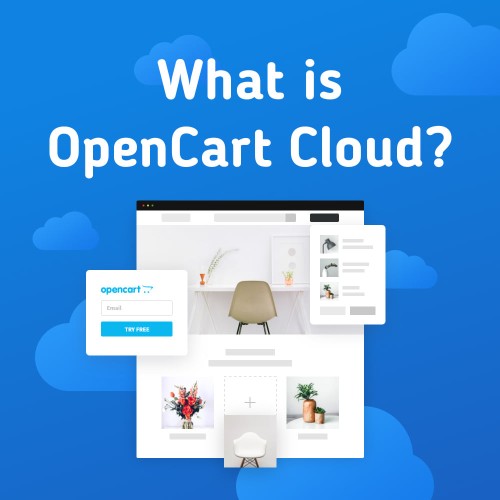As ecommerce continues to grow in popularity, it’s increasingly difficult for online retailers to compete on price or product quality alone. Shoppers expect their experience to be engaging, entertaining, and frictionless.
And thanks to the competitive nature of ecommerce, they have plenty of other options to choose from if your business doesn’t deliver. In fact, 79% of buyers would change retailers if they had a poor experience.
You have to be truly customer-centric, not just when people are browsing and buying your goods, but throughout the entire customer journey. In this post, we’ll look at the importance of ecommerce customer experience and how to improve it (and boost your revenue, too).
The relationship between customer experience and revenue
The ecommerce customer experience covers everything that happens during the customer journey, right from the first moment when a shopper hears about your business. To maximize the revenue from that shopper, it’s vital that you optimize all possible touchpoints and interactions.
As we mentioned, those who don’t get a positive experience will quickly go elsewhere. For example, if the checkout process is glitchy or unclear, they’ll abandon their shopping cart and you’ll lose out on the sale. They may not even get as far as the checkout if the whole website is difficult to use.
Free to use image sourced from Pexels
You likely won’t see that visitor again, so you’re also losing out on any potential future sales. Plus, unhappy users may leave negative feedback or post a bad review, which can be off-putting for other potential customers.
But by keeping customers happy and engaged, they’ll spend more with you in the form of more frequent orders and higher average order values. Loyal customers are the ones who don’t mind paying a little more for your products, as they trust you to provide value for money.
Those customers will also recommend you to others and may even become brand advocates, not just praising you but standing up for you against any negative comments. You’ll be able to reduce customer acquisition costs, and reinvest the extra revenue into creating even better experiences.
Strategies to boost customer experience and revenue
So, how can ecommerce businesses improve the customer experience? Here are some winning strategies.
Enhancing site navigation and search functionality
An attractive website is one thing, but it must be easy for visitors to use. Think clear design and intuitive site architecture, so that it doesn’t take any effort to browse and complete the desired action. If you’re not sure how it’s working, run a site audit and get the user’s perspective.
Make sure your site menus are readable and concise, without a sprawling mass of options, and that all the internal and external links work properly. Put your “Help”, “About Us” and “Contact Us” information in an obvious place. An auto-fill search bar also offers convenience.
Optimizing page load times and mobile compatibility
We all know how frustrating it is when a web page is slow to load, and this issue will turn potential customers away. It’s in your interest to get visitors looking at your products as quickly as possible, so make sure you boost page speed by compressing images and removing unnecessary code.
Image sourced from section.io
Now that so many people browse and shop via mobile, your site must also be optimized so that it delivers the same smooth experience on a mobile device as on a computer. Make sure that the layout, text, and images are dynamic, so they appear in the right places and sizes on any device.
Streamlining checkout for smooth transactions
Once you’ve enticed a visitor to make a purchase, you have to get them over the finish line with a streamlined checkout process. Any barriers here will lead to cart abandonment. Display the total price clearly, and don’t wait until the last stage to add taxes and shipping fees. Offer support options if there’s a problem.
It’s best to provide several payment methods, from standard card payment to digital wallets and “buy now, pay later” options. Consider enabling different currencies for global customers. You could also set up social commerce—where shoppers buy directly from social media posts—for ultimate convenience.
Providing personalized shopping journeys and deals
If you target their needs and preferences, customers believe that you value them. Luckily, businesses now have access to vast amounts of data on which to base personalized communication.
For example, you’ll get better insights into your customer base if you pair your CRM with financial and fulfillment data in an ERP system integration, as you gain a much more complete view of the entire customer journey.
Similarly, you could run a predictive analytics tool that’s integrated with your logistics and supply system. Doing so will help you make sure that your stock levels are always optimized depending on data-backed patterns on customer demand. This way, your online shoppers will always find what they want, when they want it.
Then, you can offer recommendations based on purchase and browsing history (“you may also like”), as well as special deals and rewards tailored to customer interests and timed to coincide with their online activity. You could even provide a chatbot (or a live agent) to act as a personal assistant.
Detailing product descriptions and visuals
Ecommerce customers can’t physically experience your products, so you need to provide really detailed descriptions. Include colors, dimensions, features, and capabilities, as well as information about the materials and their origin. Make absolutely sure these details are correct!
Let shoppers view products from all angles, and show images and videos of people wearing or using the items. You could leverage AR for virtual try-ons of apparel and show how products would look in customer’s homes. Reviews and photos from other customers are useful, too.
Free to use image sourced from Pixabay
Engaging customers with value-driven content
Ecommerce content is about more than product descriptions. Remember, you need to start nurturing your potential customers long before they make a purchase. Engaging onsite content will deliver value from the start, providing entertainment and building brand trust as well as showing how your products will enhance their lives.
Set up a blog and create articles that are relevant to your niche or industry, not just to your own business. You can also send out email newsletters, and engage shoppers on social media—for example, encouraging interaction via contests and user-generated content.
Offering outstanding customer assistance
It’s crucial to provide a positive experience on every support channel, whether people contact you by phone, email, SMS, social media, or live chat. And these channels should be integrated seamlessly, so that customers don’t have to repeat themselves if the conversation switches from one to another.
Self-service options such as FAQs and video tutorials save customers time, but you should always have human agents ready to handle more complex inquiries. Fast responses are critical, but so are fast resolutions. To fully engage customers, be proactive—reach out to see if they need help.
Analyzing customer behavior and purchase trends
Monitoring and analyzing customer behavior will tell you where to improve CX. You’ll be able to measure bounce rate and cart abandonments, and follow user journeys by using heatmaps and social listening. By checking email open and click-through rates, you can find out whether your personalization efforts are working.
Meanwhile, purchase trends show you who bought what and when. What other products did they browse? Which payment method did they choose? Did they need to ask a question or get support? This data will help you to provide smoother journeys and more personalization in the future.
Free to use image sourced from Pexels
Enhancing the post-purchase journey
What happens after a purchase is just as important. The first step is to nail the fulfillment process: offer fast, free shipping and make sure the item arrives in perfect condition and as described. Let the customer track their parcel and keep them informed of progress. Personalized packaging is also a great way to engage shoppers.
Returns are a big factor in ecommerce, so make sure your returns policy is fair and transparent. Customers expect returns to be free of charge. They expect replacement items to be sent out swiftly, and refunds to be processed quickly. Offer convenience with drop-off points for return parcels.
Send a follow-up message to thank the shopper for their custom, and check they’re happy with the product. Ask for feedback, and tell them when you’ve implemented it.
Consistently innovating with evolving customer needs
In the competitive world of ecommerce, you can’t stop innovating—you need to keep finding ways to go above and beyond for your customers. Feedback and social listening help you keep track of changing preferences and expectations, while predictive analytics will reveal new opportunities.
For example, you might create initiatives to reward your customers, or work on re-engaging those who have dropped off the radar. Naturally, the more demanding and multi-faceted your customers’ expectations are, the more skills and expertise your dedicated team needs to acquire.
It’s essential, then, to keep scouting for talented professionals who can help you keep your finger on the pulse of any changes in customer needs. Relying on HR software that enables you to onboard, train, and manage new hires quickly is a must.
Free to use image sourced from Pexels
Final thoughts
With so many online retailers and similar products available around the web, ecommerce customer experience can be a significant differentiator. It’s up to you to provide whatever your customers want, and to make their lives easier.
Always put yourself in their shoes and consider how they would perceive every touchpoint. Use the reams of customer data to determine and predict their needs, and to personalize wherever possible.
With engaging content, streamlined processes, and proactive support, you can deliver an ecommerce customer experience that exceeds expectations rather than merely meeting them.




Login and write down your comment.
Login my OpenCart Account